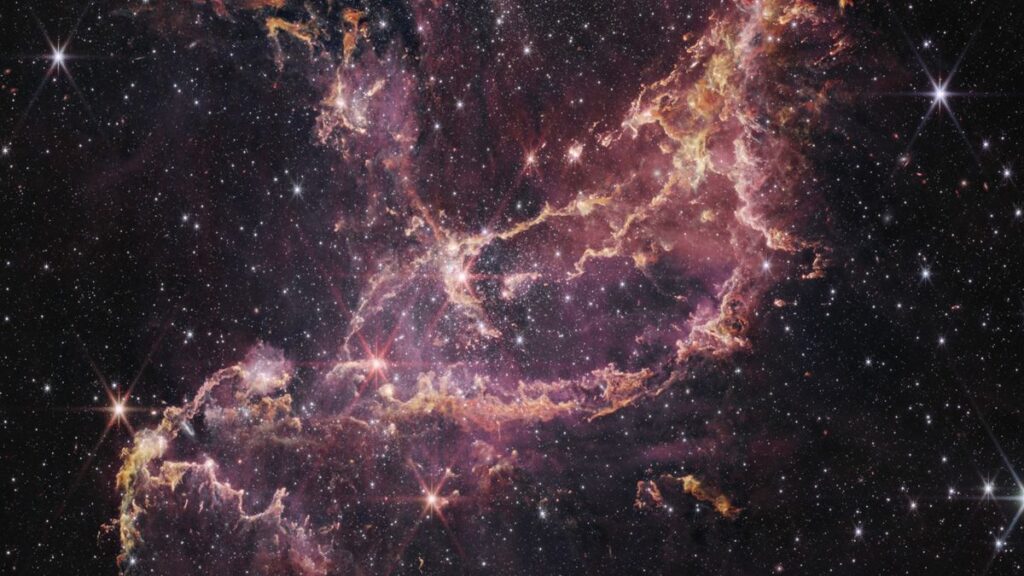
NASA’s James Webb Space Telescope (JWST) has detected chemical ingredients essential to life as we understand it, swirling around two young protostars named IRAS 2A and IRAS 23385. Among the intriguing substances identified are ethanol, which forms the basis of alcoholic beverages, and likely acetic acid, a vital component of vinegar. This discovery, made by an international team of astronomers using Webb’s Mid-Infrared Instrument (MIRI), not only fascinates the culinary-minded but also sheds light on the cosmic processes that may give rise to habitable planets.
The team’s observations have revealed a variety of icy compounds containing complex organic molecules (COMs), furthering our understanding of the intricate chemistry that occurs within the universe’s colder, darker regions. “This finding addresses one of the long-standing puzzles in astrochemistry,” said team leader Will Rocha of Leiden University in the Netherlands, highlighting the importance of these organic compounds in the formation of life-supporting worlds.
These COMs, found in their icy form, suggest that chemical reactions on the surfaces of cold dust grains can produce complex molecular structures. The discovery that these molecules originate from the sublimation of ices—transitioning directly from solid to gas without becoming liquid—provides astronomers with new insights into the creation of even more significant molecules in space. Moreover, understanding how these COMs might be transported to planets during the later stages of protostellar evolution raises the possibility of seeding new worlds with the necessary ingredients for life.
In addition to the more complex molecules, simpler compounds like formic acid, methane, formaldehyde, and sulfur dioxide were detected. Notably, sulfur dioxide and other sulfur-bearing compounds are believed to have been critical in driving metabolic reactions on early Earth, underscoring the importance of these findings.
Particularly intriguing is the protostar IRAS 2A, a low-mass star that may offer a glimpse into the early stages of our own solar system. The chemicals found around IRAS 2A suggest that similar compounds were present during the formative years of our solar system, potentially contributing to the emergence of life on Earth. “All of these molecules can become part of comets and asteroids and eventually new planetary systems,” stated Ewine van Dishoeck of Leiden University, emphasizing the potential for these cosmic ingredients to integrate into forming planets, paving the way for life’s genesis across the universe.




































Leave a Reply